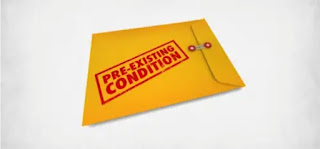Pre-existing Condition Exclusion Period
Pre-existing Condition Exclusionary Period
A pre-existing condition exclusion period is a time period during which a health insurance plan will not cover care related to a pre-existing condition.
A pre-existing condition is a medical condition that you had before you enrolled in a health insurance plan. To determine if a condition is pre-existing, the insurance company will look back a certain period of time, known as the look-back period. The look-back period is typically 6 months, but it can be longer in some cases.
If you have a pre-existing condition, you may still be able to get coverage, but you may have to pay a higher premium or deductible. You may also have to wait until the end of the pre-existing condition exclusion period before your insurance company will cover care related to your pre-existing condition.
A pre-existing condition is any health problem or ailment that was previously diagnosed at the time of applying for coverage.
A pre-existing condition exclusion can not be longer than 12 months from your enrollment date, or 18 months in the case of late enrollment. Remember there are no waiting periods for medical plans, including for pre-existing conditions.
In the past, if individuals could prove that they had creditable coverage before joining the new plan, the exclusion period could be waived. Today, insurers cannot deny coverage to somebody based on pre-existing conditions, nor charge more.
Some insurance carriers still have pre-existing condition exclusion periods. Insurers in some jurisdictions have restrictions added include a pre-existing condition exclusion period.
However, after the pre-existing exclusionary period expires, the condition becomes covered under a Long term Disability (LTD) coverage. Most policies have a pre-existing condition exclusion.
#benewinsurance #insurtech #inclusiveinsurance #insurance #reinsurance #takaful




Comments
Post a Comment
Thank you for making this valuable comment.